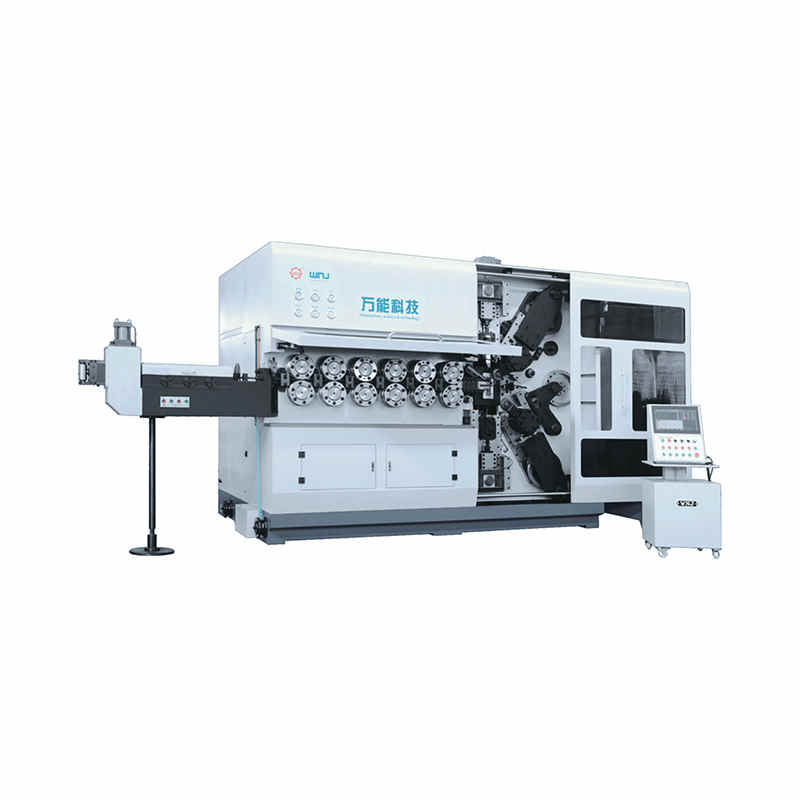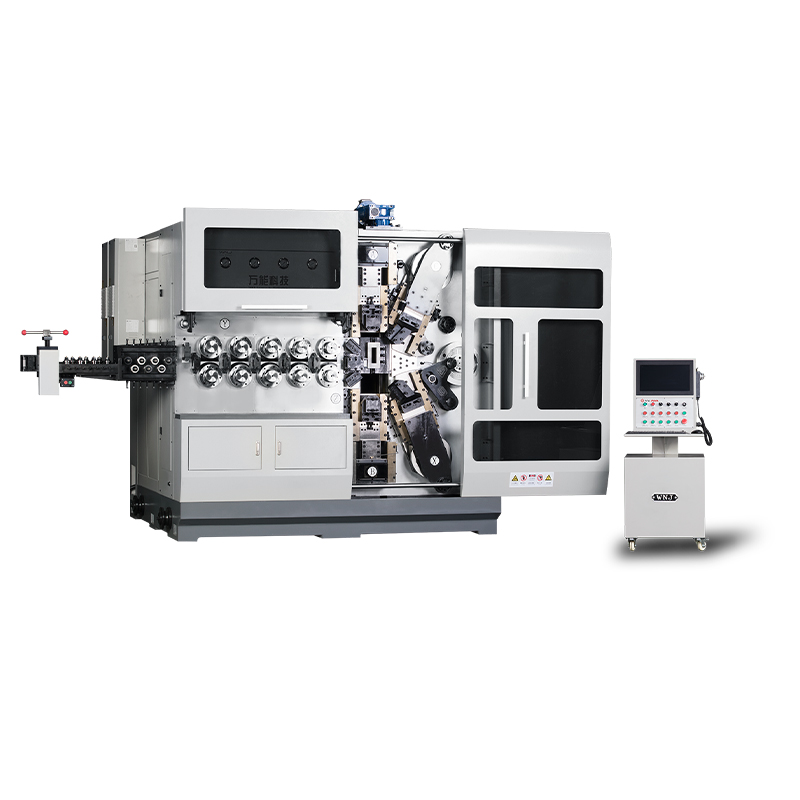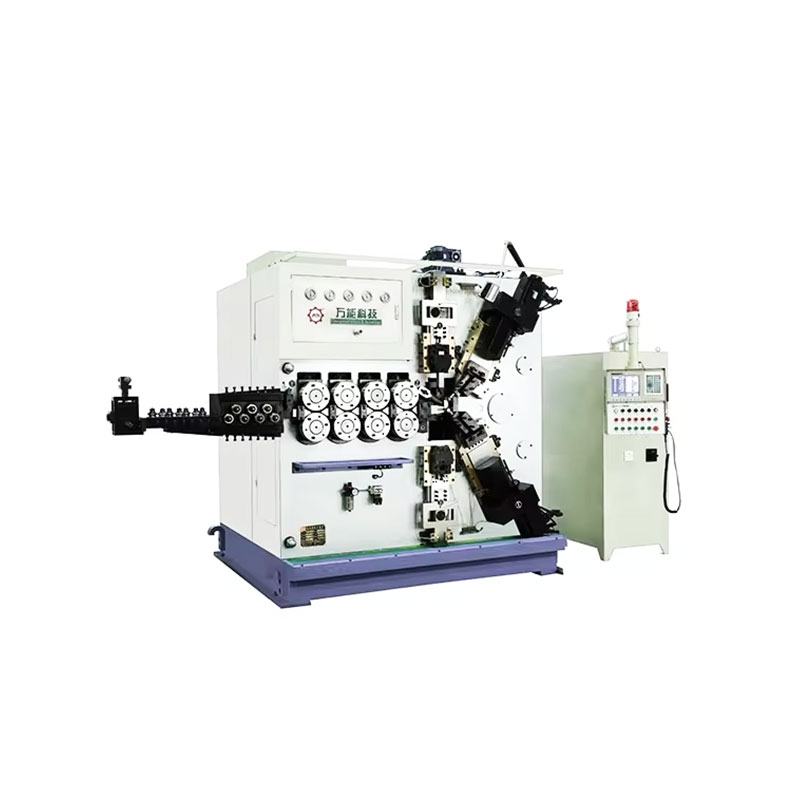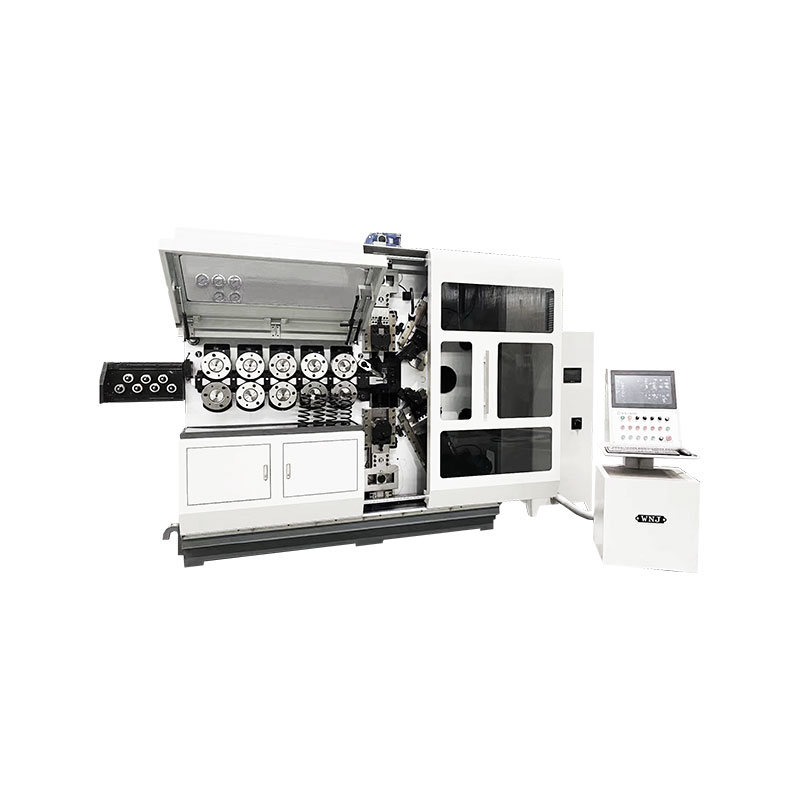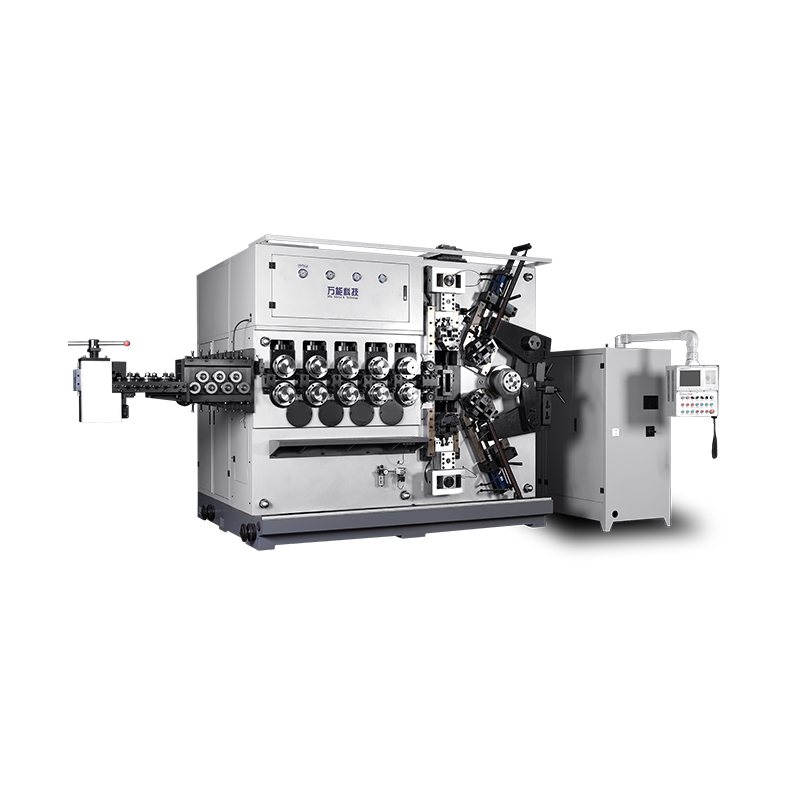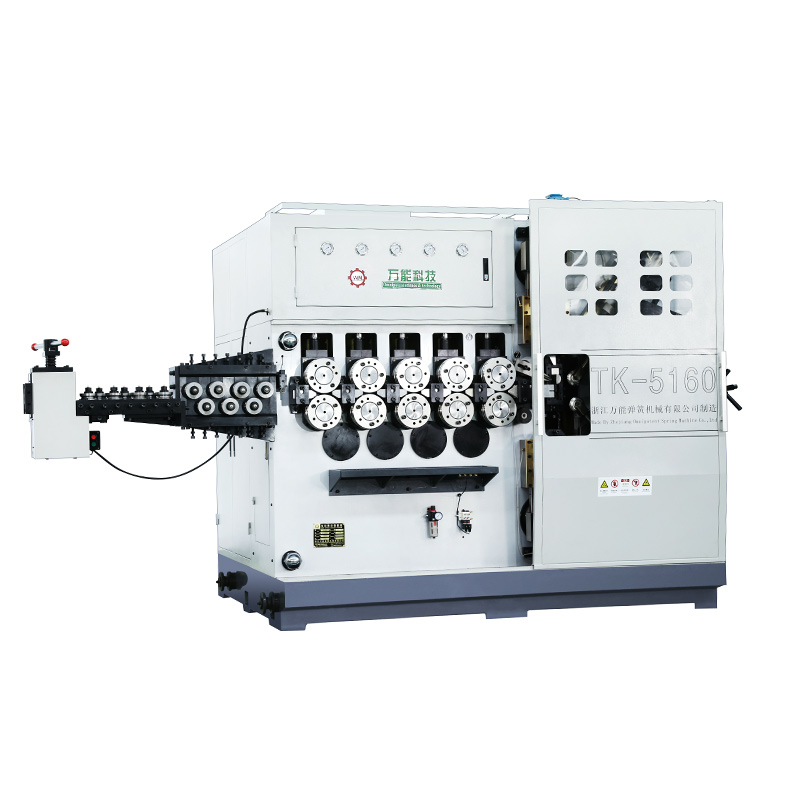Spring machinery utilizes a combination of mechanical processes and advanced controls to produce various types of springs. The specific operation of spring machinery may vary depending on the machine's design and capabilities, but the general process involves the following steps:
Raw Material Feeding: The spring machinery begins by feeding the appropriate raw material, typically steel or other spring-grade wire, into the machine. The wire is usually supplied in spools or coils.
Wire Straightening: The machine straightens the wire to ensure it is uniform and free from any bends or kinks, which could affect the spring's quality.
Wire Cutting: The straightened wire is cut into the required length for the specific spring type being produced. This is typically done using a cutting mechanism such as shears or blades.
Coiling: The cut wire is then fed through a coiling mechanism that forms the wire into the desired shape of the spring. Different coiling methods and tools are used to create specific spring types, such as compression, tension, or torsion springs.
Forming and Bending: Some spring machinery may include additional forming and bending steps to shape the spring into its final configuration, particularly for more complex spring designs or wire forms.
Heat Treatment (Optional): For certain applications, the spring may undergo a heat treatment process to enhance its mechanical properties, such as hardness or elasticity. Heat treatment is particularly common for high-performance or critical-use springs.
Grinding and Finishing (Optional): If required, the spring's ends or surfaces may be ground or finished to achieve precise dimensions and smoothness.
Quality Inspection: Throughout the manufacturing process, spring machinery may incorporate sensors and measurement systems to ensure that the springs meet the specified dimensions and tolerances. Quality inspections help identify any defects or deviations.
Collection and Packaging: Once the springs are produced and inspected, the machinery collects and arranges them for packaging and distribution.
Modern spring machinery often utilizes computer numerical control (CNC) technology and advanced software, enabling high precision and flexibility in producing various spring types. CNC-controlled machines can be programmed to create different spring configurations quickly and accurately, making it possible to switch between different production setups with minimal downtime.
It's important to note that different types of spring machinery may specialize in certain spring types or configurations. Manufacturers may choose specific machinery based on their production needs and the types of springs they intend to produce. Additionally, skilled operators and regular maintenance of the machinery are crucial to ensure optimal performance and consistent quality of the manufactured springs.
